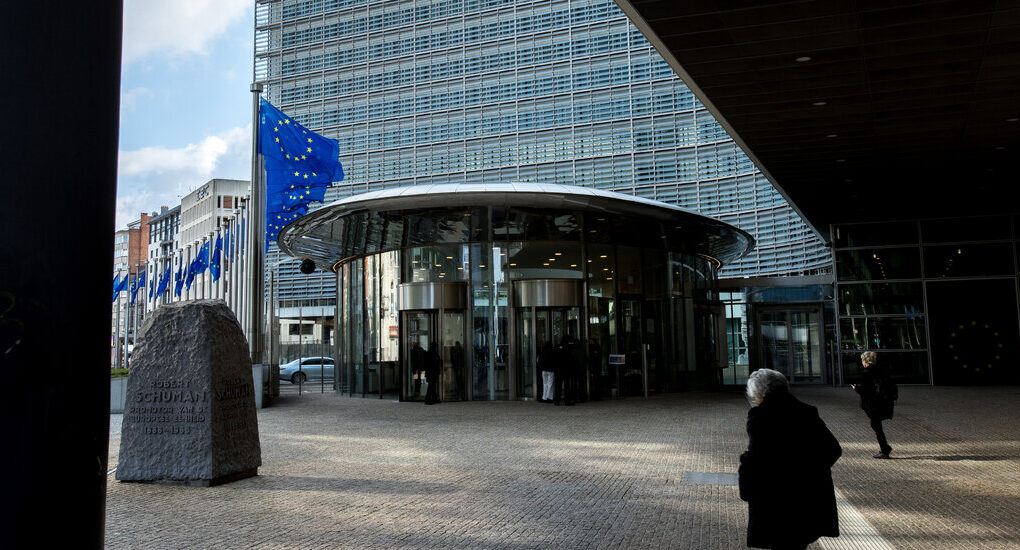Following months of political wrangling, the European Union on Tuesday officially began a lengthy process to deliver on its pledge to use money derived from frozen Russian central bank assets toward the reconstruction of Ukraine.
The European Commission, the bloc’s executive arm, said it had agreed on a proposal detailing a legal way to use interest earned and other profits from these assets, which are held in European financial institutions, to Ukraine’s benefit. But contrary to the usual practice, the commission has not disclosed publicly its contents, reflecting how politically fraught the plan is for many of member nations.
The plan has the potential to provide Ukraine up to 3 billion euros ($3.25 billion) a year, or as much as €15 billion from 2023 to 2027, said an official involved in the process who was not authorized to speak about it publicly. But those figures could vary according to market conditions.
Tuesday’s proposal still has a way to go before it can be implemented. It must be approved by the European Parliament and all 27 member states, and is expected to face resistance from some countries. France, Germany and Italy expressed objections, according to the official, and Hungary has been blocking a separate financing mechanism for Kyiv, which the leaders are expected to discuss at a summit later this week.
But the attempt to free up money for Ukraine comes amid growing concern that financial support for the war effort is waning among European countries and the United States.
The commission’s plan requires financial services companies holding frozen Russian central bank assets to place the profits generated from them, such as interest earned, in separate accounts, according to the proposal seen by The New York Times. Member states are to decide how these profits should then be directed to Ukraine, the proposal stated, opening the doors to yet another drawn-out negotiation. The plan does not use the assets, the balance of which will remain untouched.
The proposal’s limited scope is also an attempt to address concerns about future legal claims to the money by Russia. The revenues “do not constitute sovereign assets and do not have to be made available to the Central Bank of Russia under applicable rules,” according to the document seen by The Times.
After Russia invaded Ukraine last year, Western nations took an unusual step of freezing more than $330 billion in Russian central bank assets held abroad. But as payments to Russia have been blocked by sanctions, cash generated from these assets has remained stuck abroad, with the bulk of the sum, over $217 billion, frozen in the European Union. Almost all of it is held in Belgium by Euroclear, a financial services company.
Euroclear has needed to invest the extra cash to avoid accruing extra financial risk. In the first nine months of this year, those investments earned about €3 billion in profits, according to the latest financial statements from Euroclear.
The discreet tone of Tuesday’s announcement contrasted with loud declarations earlier in the year by the bloc’s top officials to “make Russia pay” for the war. But a legal proposal was delayed twice because of disagreements among member states, concerns raised by the European Central Bank and fears over financial liabilities at Euroclear.
The European Central Bank warned that using assets from another country’s central bank could harm Europe’s perception as a safe place to store money, and could lead countries to move away from euro-denominated assets, harming the bloc’s plan to increase the international use of the euro.
Euroclear had also been concerned that Russia’s legal rights to the proceeds from its assets could present a sizable financial risk for the company.
U.S. Treasury Secretary Janet L. Yellen told Congress earlier this year that confiscating Russian assets frozen in the United States would probably require a change to American law.
A Treasury representative said the Biden administration had not yet determined if it would follow Europe’s move with a tax on the proceeds of Russian assets that are frozen in the United States.
“Looking ahead to additional sources of assistance, I support harnessing windfall proceeds from Russian sovereign assets immobilized in particular clearinghouses and using the funds to support Ukraine, which the G7 has now committed to exploring,” Ms. Yellen said in October, referring to the Group of 7 countries.
The European Commission, which previously expressed concerns on moving ahead by itself, felt comfortable advancing the proposal after a G7 meeting last week. The group, including the United States and Britain, said that “decisive progress” was needed to direct extraordinary revenues from the immobilized Russian assets to support Ukraine, “consistent with applicable contractual obligations and in accordance with applicable laws.”
“We reaffirm that consistent with our respective legal systems, Russia’s sovereign assets in our jurisdictions will remain immobilized until Russia pays for the damage it caused to Ukraine,” the leaders’ statement from a virtual G7 meeting held in December said.
Alan Rappeport contributed reporting.



